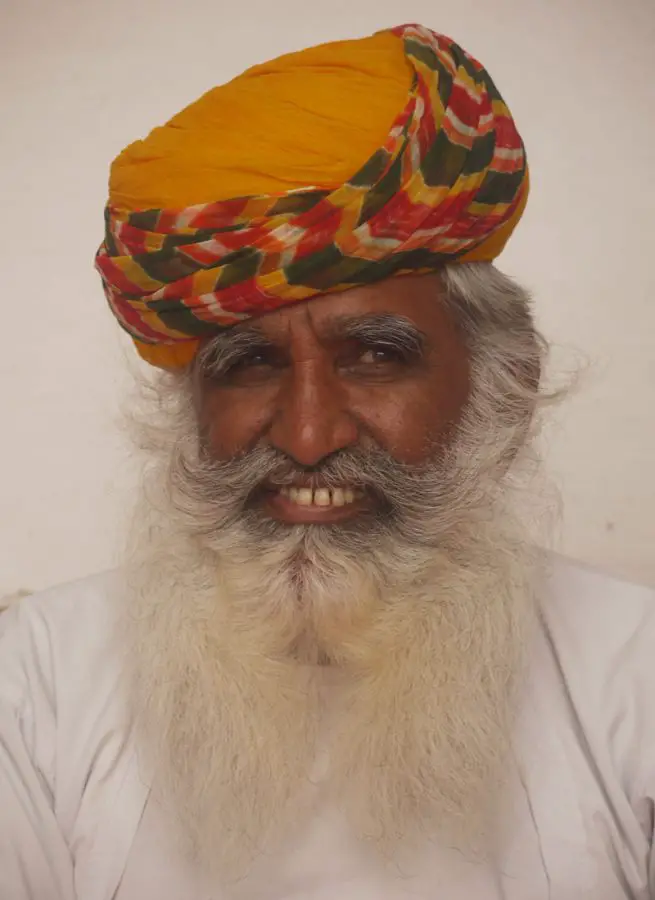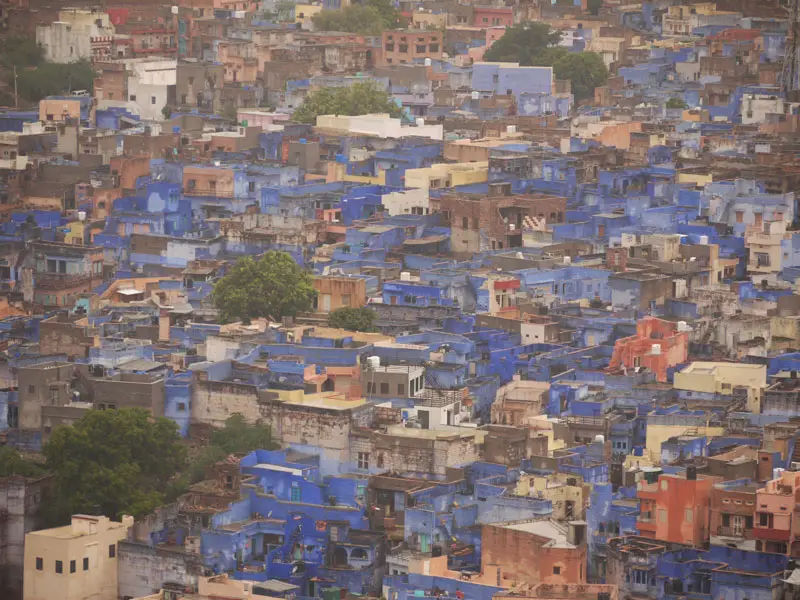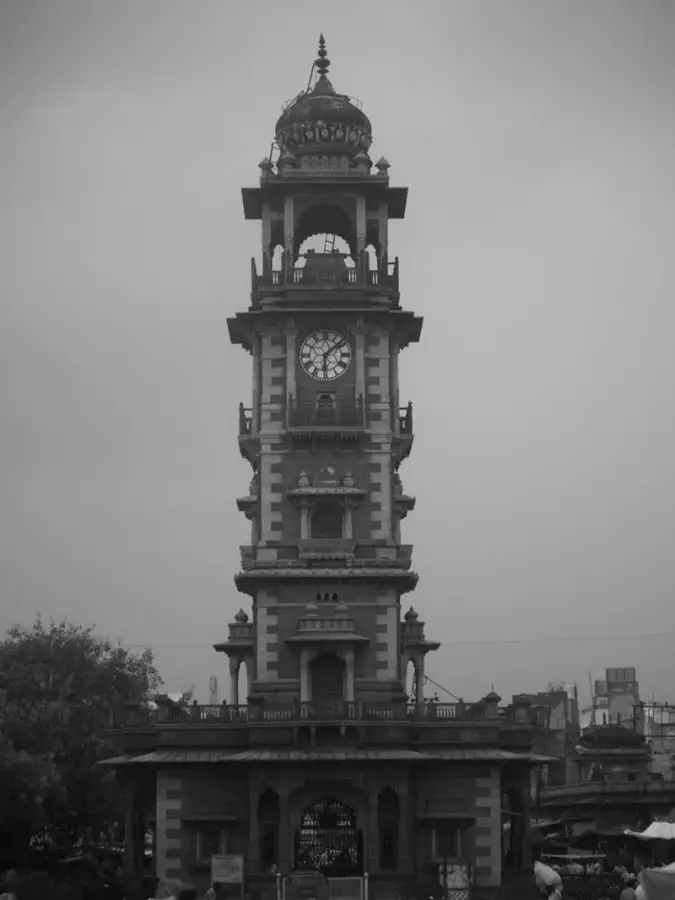As we arrived into Jodhpur the skies opened and it began to pour down on Rajasthan’s famous blue city. After negotiating our rate with one of the twenty or so willing rickshaw drivers waiting at the door of the bus, who were much more concerned with us than any of the local passengers, we got on our way. Rajasthan is home to three ‘coloured’ cities; Jaipur, the pink city, Jaisalmer, the golden city and Jodhpur, the blue city. While Jaipur is not really that pink and should be renamed the brownish red city, Jaisalmer was as golden as a city could be, so right now we were at one out of three and driving through Jodhpur’s busy streets we were having problems seeing how this city had earned it’s title. However, we held out hope and continued on our way through the miserable weather towards our guest-house, located in the shadow of the magnificent Mehrangarh Fort.
As soon as we arrived at our guest-house we grabbed our packs and ran inside to take shelter from the rain, however when we got inside it was still raining. Our guest-house was set in a five hundred year old haveli, a traditional residential building found throughout Rajasthan and parts of neighbouring Gujarat. The term haveli is derived from the Persian word ‘hawil’, meaning ‘an enclosed place’ and is used to describe a private mansion with one major architectural difference. Havelis are built around courtyards to ensure the safety of women and to protect from the harsh heat during the long, hot Indian summers. The courtyard is central to the building and all the rooms in the residence will open out onto the courtyard which is used for family get-togethers, for children to play in and for prayer services. With the rain pouring in through the open courtyard area in the centre of our guest-house we quickly checked in and before turning in took a quick trip to the sheltered roof where we caught our first glimpse of the mighty Mehrangarh Fort, sitting on a rock towering over the city.
Thankfully the rain had stopped when we ventured out into the streets of Jodhpur the following morning. We had come to Jodhpur primarily to visit it’s famous fort and see the blue city and that’s exactly what we did. An auto rickshaw drove us up the steep hill towards the fort, quickly leaving the city far below us. After entering the fort we skirted along the outer walls and then from our vantage point, one hundred and twenty metres above the city, we could finally see the reason why this was known as the blue city. Pockets of solid blue coloured buildings were clearly visible form the fort’s walls and stood out brilliantly against the otherwise drab city scape. Originally the Brahmin people (the highest caste in India) painted their homes blue so that everyone knew
where the Brahmins lived, however nowadays everyone in Jodhpur is painting their homes blue to uphold the city’s traditions but also because it is thought that the blue colour acts as a mosquito repellent. (Did smurfs ever get bitten by mosquitoes?! ) Back in the fort, we spent a few hours winding through the over-the-top lavish living quarters of the Maharajas and learning about the history of the fort from the informative audio tour. We were treated to a turban demonstration in one courtyard, showed opium by a fort employee (for demonstration purposes) and admired the beautifully decorated rooms which were adorned with stained glass and mirrors in every shape and design possible. Lattice screens covered the windows and huge cannons protected the forts outer walls from intruders. Even the fort’s huge wooden gates were designed in a unique and clever way; just before the attacking army would reach the fort gate the path turns sharply causing the enemy elephants to lose all momentum and prevent them from battering down the gates.
With the Mehrangarh Fort tour finished, we headed back into the narrow, winding streets of the old city to visit the markets and see the century old landmark clock tower which stands proudly over the marketplace. It was as if the rain had allowed us just enough time to see the fort and nothing more and we left the busy market, dodging cows, rickshaws, vendors and women donned in impossibly bright saris. Another haveli housed a restaurant where we stayed in out of the rain for dinner before making our way to the roof to catch one more glimpse of Mehrangarh Fort lit up by powerful spotlights. From here, we could also see the clock tower, which was illuminated too, but in a much less tasteful manner. With our time in Jodhpur coming to a close we trudged through the busy, wet, muddy streets, back towards our guest-house to pack our things and get ready for the short, six-hour train journey to the Hindu pilgrimage town of Pushkar.

Brian is a travel writer, photographer, blogger, travel addict and adventure-junkie. Being outdoors, getting off the beaten track and outside his comfort zone is what makes him tick. Brian’s the dreamer in the relationship; when he’s not travelling, he’s dreaming about it! Keeping fit, cooking, music and red wine take up the rest of his time.
Sign up for our free travel photography Ebook "Faces of Nepal" and you'll also receive our monthly newsletter.








